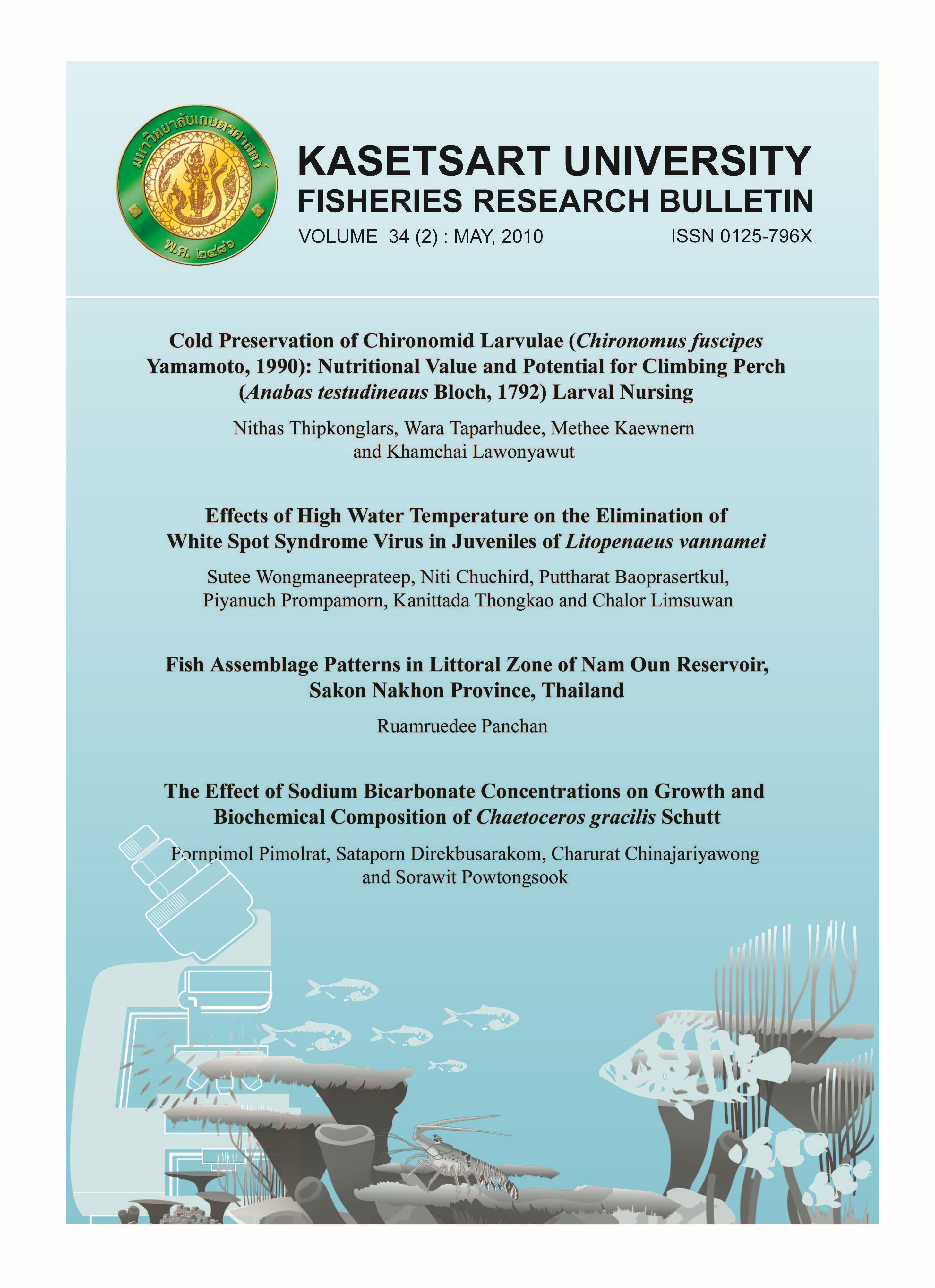Effects of High Water Temperature on the Elimination of White Spot Syndrome Virus in Juveniles of Litopenaeus vannamei
Main Article Content
Abstract
This study evaluated the effects of high water temperature (32±1°C) on white spot syndrome virus (WSSV) infection in Litopenaeus vannamei juveniles (5-6 g). WSSV challenge was done by immersion and oral routes. One group of shrimp was constantly maintained at 32±1°C until the end of the experiment after challenge while a control group of shrimp was constantly maintained at 28± 1°C until the end of the experiment after challenge. Other groups were kept at 32±1°C until the temperature was switched to 28±1°C at 0, 1, 3, 5 and 7 days after challenge. Gross signs and mortality were monitored every 12 h until the end of the experiment. WSSV infections were confirmed by nested-PCR, histopathology, immunohistochemistry and bioassay methods. Challenged shrimp maintained at 32±1°C for 0, 1, 3 and 5 days before switching to 28±1°C revealed that maintaining for a longer period at 32±1°C could delay clinical signs and onset of mortalities. Nevertheless, 100% mortalities occurred in all groups and control group within 7 days. All moribund shrimp were WSSV-positive by nested PCR assay as well as histopathology, immunohistochemistry and bioassay methods. The histopathology of infected shrimp showed hypertrophied nuclei with eosinophilic (Cowdry A-type inclusion) to basophilic inclusion bodies in the cells of the cuticular epidermis, stomach cuticular epithelium, connective tissue, gills, antennal gland, heart and haematopoietic tissue. In contrast, the two groups of shrimp, i.e. those constantly maintained at 32±1°C during the experiment, and another at the same temperature for 7 days after challenge before switching to 28± 1°C, did not show any clinical signs and mortality. Surviving shrimp from both groups were WSSV-negative by nested-PCR assay as well as histopathology, immunohistochemistry and bioassay methods. This study clearly indicated that shrimp maintained constantly at 32±1°C for 7 days were able to eliminate/clear WSSV infection.


